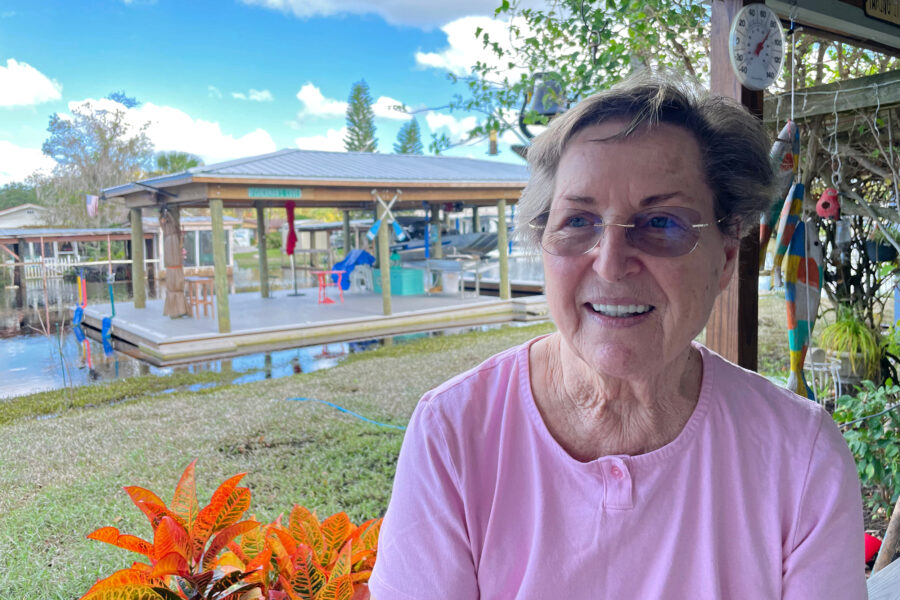‘Catastrophic’ Hurricane Helene Makes Landfall in Florida, Menaces the Southeast
Hurricane Helene made landfall late Thursday in Florida’s Big Bend region with catastrophic and deadly winds and storm surge before menacing a vast swath of the Southeast.
The hurricane came ashore as an unusually large, fast-moving category 4 storm, packing winds of up to 140 miles an hour, near Perry in the sparsely populated Big Bend region, so named for the way the peninsula meets the Panhandle. By Friday morning, Helene was a tropical storm swirling over Georgia. The storm was forecast to turn northwestward and slow down over the Tennessee Valley later Friday and Saturday.
“We’re scared to death,” said Jeff Chanton, professor in the Department of Earth, Ocean and Atmospheric Science at Florida State University in Tallahassee, some 55 miles northwest of where the hurricane struck.
Chanton and his wife planned to ride out the storm on campus, after a tornado damaged the roof of their home in the spring. He wondered whether the back-to-back disasters had others contemplating a concept climate scientists such as himself refer to as retreat.
“It sure makes me want to leave,” he said. “We’re just all hunkering down.”
Explore the latest news about what’s at stake for the climate during this election season.
With winds extending as far as 345 miles beyond its center, Helene was poised to exert profound impacts across the Southeast. Florida Gov. Ron DeSantis declared states of emergency in 61 of the state’s 67 counties, and evacuation orders were issued in multiple counties. Heavy rain and flooding were expected as far north as Atlanta and western North Carolina including Asheville, with as much as 20 inches predicted in some areas. In the southern Appalachian Mountains, strong gusts and extreme rain raised fears of flash floods and landslides. Tornadoes were possible in north Florida, southeast Georgia, the low country of South Carolina and southern North Carolina.
“It’s not going to be good,” said Phil Klotzbach, a senior research scientist in the Department of Atmospheric Science at Colorado State University. “The impacts are going to be felt pretty far inland.”
In Florida’s Big Bend region, Helene was the third hurricane in 13 months. Debby hit the region in August as a category 1 storm. Idalia made landfall here in August 2023 as a category 3 hurricane. Klotzbach said the succession was unusual but attributed it to bad luck. A trio of hurricanes back in 1886 tore through the region within the span of a few weeks, he said.
Forecasters warned of Helene’s “catastrophic hurricane-force winds” and a “catastrophic and deadly storm surge” as high as 20 feet along parts of the Big Bend coast before the storm made landfall. By comparison, the storm surge during Hurricane Ian in 2022 was as high as 15 feet, according to the National Hurricane Center. Ian was the costliest hurricane in state history and third-costliest on record in the United States, after Katrina in 2005 and Harvey in 2017. Ian’s storm surge was responsible for 41 deaths including 36 in Lee County, on the southwest corner of the peninsula, where the hurricane made landfall.
“This is a life-threatening situation,” the National Hurricane Center warned of Helene. “Persons located within these areas should take all necessary actions to protect life and property from rising water and the potential for other dangerous conditions. Promptly follow evacuation and other instructions from local officials.”
In Cedar Key, a coastal community about 95 miles southeast of where the hurricane hit, business owners in the town center were loading items into moving trucks in the days before Helene. The town center, which consists of a smattering of pastel-painted shops and restaurants and establishments like a history museum, faced a possible storm surge of 10 feet to 15 feet.
“They rented U-Haul trucks,” said Timothy Solano, who works for a family-owned clam business. “They were getting everything out that they could.”
Solano evacuated with his wife, 5-year-old son, 3-year-old daughter and another 3-month-old daughter to a home they rented about an hour’s drive away. He feared the family clam business would be washed away entirely but characterized the community as resilient.
“The mood is defeated but hopeful,” he said. “These are father-son operations. These are husband-wife operations. These are people who have put their whole life into clam farming, and there is no giving up. This is something some of these people have been doing their whole life.
“The people that are invested into this industry, of course it stinks and it hurts whenever these things happen. But they’ve been doing this for so long, they’re not going anywhere. They’re going to try to get back on their feet and dust their shoulders off and get back to it.”
“At this moment you try not to think about it too much because there’s nothing we can do right now,” he added. “It’s all in Mother Nature’s hands.”
Helene forged a path through the Gulf of Mexico similar to that of last year’s Idalia, with the gulf’s unusually warm water powering a rapid intensification of Helene, a phenomenon that is becoming more common because of climate change. The hurricane arrived in Florida near the height of a season that had been expected to be extraordinarily active. The National Oceanic and Atmospheric Administration predicted 17 to 24 named storms for the season that runs from June 1 to Nov. 30, the most named storms the federal agency had projected since the forecasts began in 1998.
The forecast included eight to 13 hurricanes. Helene was the fifth hurricane of the season, after Beryl, Debby, Ernesto and Francine. NOAA based its forecast most notably on the warm sea surface temperatures of the tropical Atlantic Ocean and Caribbean Sea.
About This Story
Perhaps you noticed: This story, like all the news we publish, is free to read. That’s because Inside Climate News is a 501c3 nonprofit organization. We do not charge a subscription fee, lock our news behind a paywall, or clutter our website with ads. We make our news on climate and the environment freely available to you and anyone who wants it.
That’s not all. We also share our news for free with scores of other media organizations around the country. Many of them can’t afford to do environmental journalism of their own. We’ve built bureaus from coast to coast to report local stories, collaborate with local newsrooms and co-publish articles so that this vital work is shared as widely as possible.
Two of us launched ICN in 2007. Six years later we earned a Pulitzer Prize for National Reporting, and now we run the oldest and largest dedicated climate newsroom in the nation. We tell the story in all its complexity. We hold polluters accountable. We expose environmental injustice. We debunk misinformation. We scrutinize solutions and inspire action.
Donations from readers like you fund every aspect of what we do. If you don’t already, will you support our ongoing work, our reporting on the biggest crisis facing our planet, and help us reach even more readers in more places?
Please take a moment to make a tax-deductible donation. Every one of them makes a difference.
Thank you,
David Sassoon
Founder and Publisher
Vernon Loeb
Executive Editor
Share this article
Disclaimer: The copyright of this article belongs to the original author. Reposting this article is solely for the purpose of information dissemination and does not constitute any investment advice. If there is any infringement, please contact us immediately. We will make corrections or deletions as necessary. Thank you.








